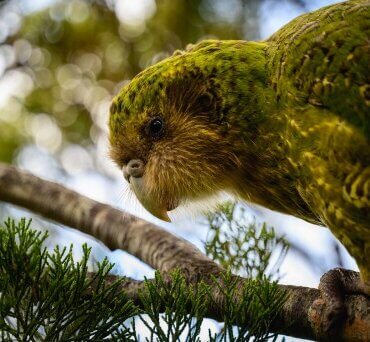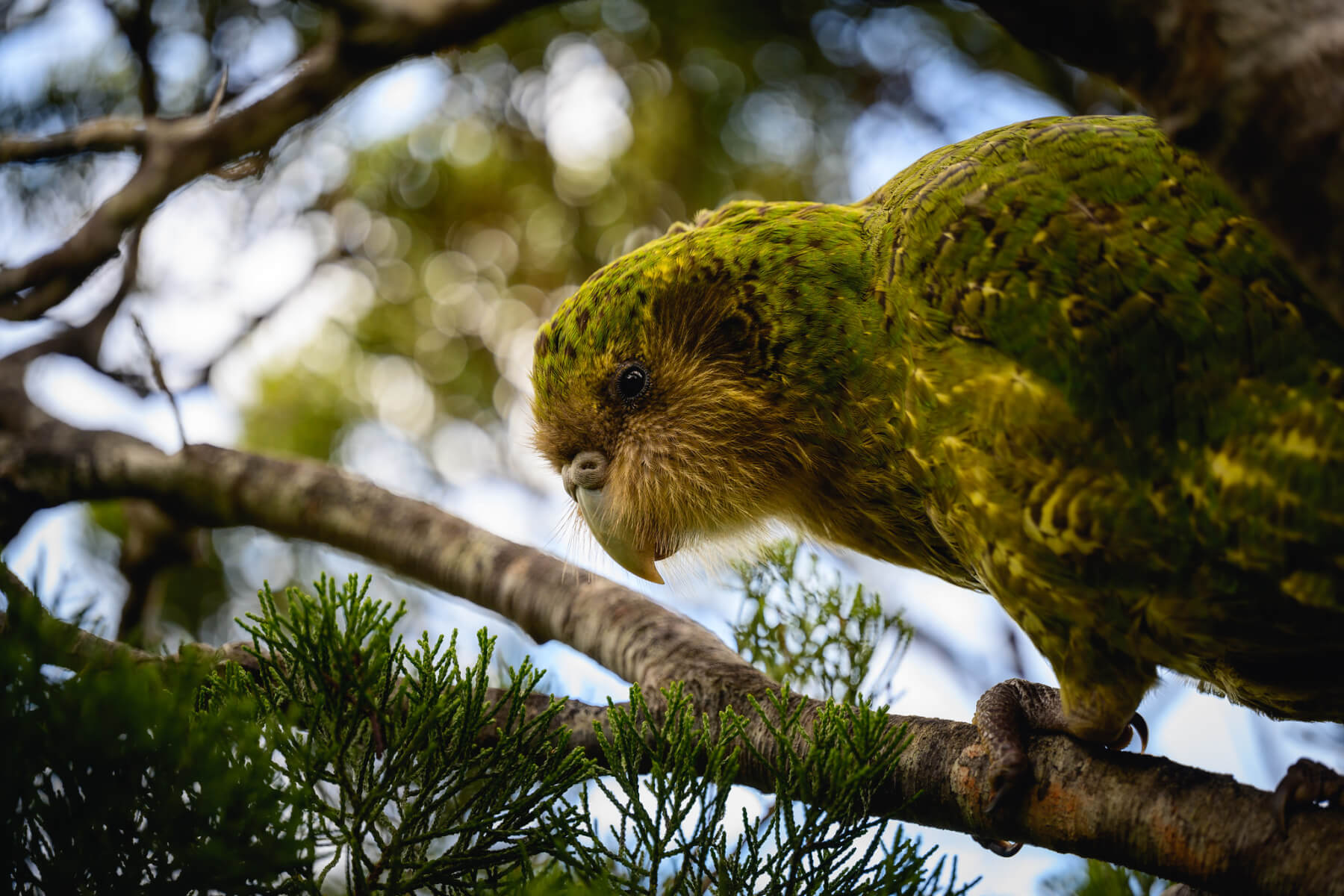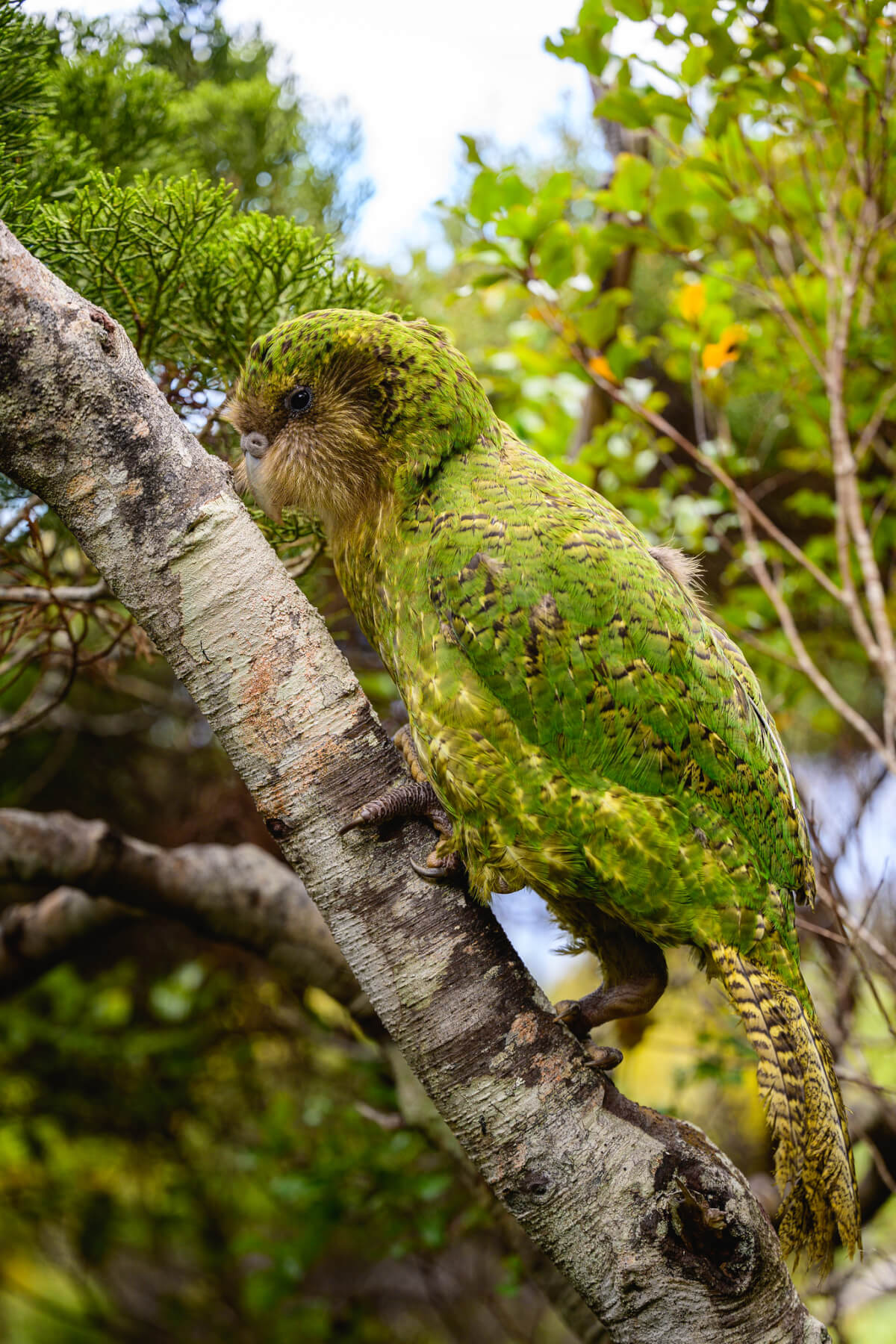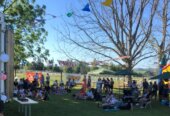
Tautahi. Photo: Jake Osborne/DOC.
A determined kākāpō – moved from the South Island to Sanctuary Mountain Maungatautari last month – made a daring escape last week.
Tracing data shows four-year-old Tautahi used a downed tree to boost himself over the fence and onto neighbouring farmland before heading on a hīkoi towards a farm block on the mountain’s south-east corner.
A Department of Conservation ranger intercepted him and returned him to the mountain.
Kākāpō operations manager Deidre Vercoe says it was a “good learning opportunity”.
“Kākāpō have never lived in a fenced sanctuary before, and years of planning and preparation has gone into making this new phase of kākāpō conservation a reality.”
See: Department of Conservation release below.
New insights gained from kākāpō translocation
The trial kākāpō population in the heart of the Waikato continues to give insights after a determined parrot found a way to leave the fenced sanctuary.
Four-year-old Tautahi, who was safely returned to Sanctuary Mountain Maungatautari last week, is believed to have used a downed tree to boost himself over the fence and out onto the neighbouring farmland.
GPS data shows he spent time investigating the fence line, before heading on a hīkoi towards a farm block on the south-east corner of the mountain where he was intercepted by one of the ranger team.
Department of Conservation (DOC) Operations Manager for kākāpō, Deidre Vercoe, says the experience is a good learning opportunity for the trial population.
“Kākāpō have never lived in a fenced sanctuary before, and years of planning and preparation has gone into making this new phase of kākāpō conservation a reality. We’re thrilled to be at the stage where we can experience in real time how the manu react and adapt our management processes accordingly.”
While departure from the sanctuary was not ideal, it was one of the expected challenges of the trial, Deidre says.
“Kākāpō are smart, determined and excellent climbers. The two-metre high, 47km-long fence underwent a modification ahead of the translocation to add a barrier to deter kākāpō from climbing it, however as with any trial there is always an element of the unknown,” Deidre says.
“This is the purpose of a trial – to learn how to adapt to best suit kākāpō. It’s great to have real life data on how they react so we can refine our approach.”
The kākāpō wear transmitters and GPS and are regularly monitored by rangers but there are some limitations with the technology; this combined with adverse weather and difficult terrain prevented us from pinpointing Tautahi for several days, but once we saw he was definitively outside the perimeter we acted quickly and were able to return him safely to the sanctuary, Deidre says.
Tautahi is one of 10 male Ngāi Tahu kākāpō transferred from Whenua Hou / Codfish Island, Pukenui / Anchor Island and Te Kākahu-o-Tamatea / Chalky Island as part of an historic trial involving DOC, Ngāi Tahu and Sanctuary Mountain Maungatautari to see whether these flightless, nocturnal parrots can thrive in a fenced sanctuary, as the current habitat – predator free offshore islands – are close to capacity for kākāpō.
Te Rūnanga o Ngāi Tahu Kākāpō Species Representative Tāne Davis has worked with the taonga for many years and was not surprised by the escape attempt.
“The manu will always challenge us. Each of the kākāpō are adapting to their new surroundings and we need to refine our approach alongside them. They’ve spent their life on offshore islands with no fences, so it’s natural for them to be inquisitive.”
General Manager of Sanctuary Mountain Maungatautari Helen Somerville says learnings and adjustments to the Sanctuary’s operating protocols are being applied.
“Our team will add additional vegetation clearances and increase the monitoring of Tautahi over the coming weeks to ensure he stays within the safety of the sanctuary.
“This event highlights the value of the partnership between Sanctuary Mountain Maungatautari, iwi, Ngāi Tahu and the Department of Conservation who are all committed to the success of this trial.”
Overall, the 10 kākāpō are doing well in the new habitat, with all having passed recent health checks.
Tautahi was part of the second cohort, transferred in September.
“What we’re seeing is a period of settling in with the kākāpō where they spend the first month or so exploring their new surroundings. Once they have the lay of the land, they tend to settle into their smaller ranges,” Deidre says.
“Many of the others have come up to the fence and simply turned around again. So now we know we need to pay extra close attention to the birds who spend more time investigating the fence in those early weeks.
“We’re looking forward to a day where kākāpō can once again roam the landscape freely, but until we can achieve large predator free areas, it’s not possible.
“Kākāpō are vulnerable to predation, so pest-free habitat like Sanctuary Mountain Maungatautari is an important stepping-stone and we look forward to continuing to learn more from this important trial.”










